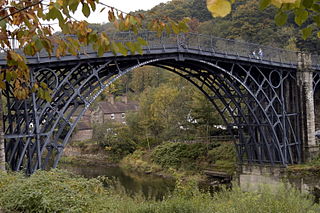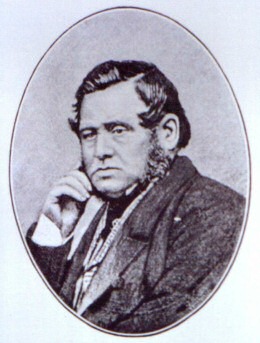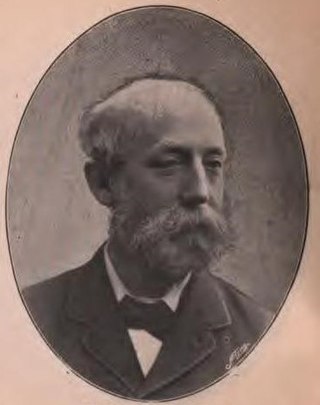
Foster, Rastrick and Company was one of the pioneering steam locomotive manufacturing companies of England. It was based in Stourbridge, Worcestershire, now West Midlands. James Foster, an ironmaster, and John Urpeth Rastrick, an engineer, became partners in 1816, forming the company in 1819. Rastrick was one of the judges at the Rainhill Trials in 1829. The company was dissolved on 20 June 1831.

An ironmaster is the manager, and usually owner, of a forge or blast furnace for the processing of iron. It is a term mainly associated with the period of the Industrial Revolution, especially in Great Britain.
Philip Foley was the youngest of the three surviving sons of the British ironmaster Thomas Foley. His father transferred all his ironworks in the Midlands to him in 1668 and 1669 for £60,000. He also settled an estate at Prestwood near Stourbridge on him on his marriage, to which Philip added the manor of Kinver.

William Collins was an English landscape and genre painter. His sentimental paintings of poor people enjoying nature became a posthumous high fashion, notably in the 1870s when his market price rose higher than Constable and stayed so until 1894. Turner, his model, far exceeded him in value.

Crawshay Bailey was an English industrialist who became one of the great iron-masters of Wales.
Isaac Wilkinson was an English industrialist, one of the founders of the iron industry and pioneer of the Industrial Revolution. However, his business ethics were precarious and his commercial affairs frequently chaotic. He became much addicted to litigation.

Robert Thompson Crawshay was a British ironmaster.

The Stourbridge Extension Canal was a short canal built to serve a number of mines in the Kingswinford area of Staffordshire in England. Although connected to the Stourbridge Canal, it was independent from it. It opened in 1840, and was abandoned in 1935. A short section of it is still used as moorings for boats using the Stourbridge Canal.

John Vaughan, known as Jacky, was born in Worcester on "St Thomas' Day" in 1799, the son of Welsh parents. He worked his way up the iron industry, becoming an ironmaster and co-founder of the largest of all the Victorian iron and steel companies, Bolckow Vaughan. Where Henry Bolckow provided the investment and business expertise, Vaughan contributed technical knowledge, in a long-lasting and successful partnership that transformed Middlesbrough from a small town to the centre of ironmaking in Britain.

Sir Alfred Hickman, 1st Baronet was a British industrialist and Conservative party politician who was a Member of Parliament (MP) between 1885 and 1906.
William Overton was an English bishop.

The Bristol School is a term applied retrospectively to describe the informal association and works of a group of artists working in Bristol, England, in the early 19th century. It was mainly active in the 1820s, although the origins and influences of the school have been traced over the wider period 1810–40. During the period of his participation in the activities of the Bristol School, Francis Danby developed the atmospheric, poetical style of landscape painting which then initiated his period of great success in London in the 1820s.

Losh, Wilson and Bell, later Bells, Goodman, then Bells, Lightfoot and finally Bell Brothers, was a leading Northeast England manufacturing company, founded in 1809 by the partners William Losh, Thomas Wilson, and Thomas Bell.

Bolckow, Vaughan & Co., Ltd was an English ironmaking and mining company founded in 1864, based on the partnership since 1840 of its two founders, Henry Bolckow and John Vaughan. The firm drove the dramatic growth of Middlesbrough and the production of coal and iron in the north-east of England in the 19th century. The two founding partners had an exceptionally close working relationship which lasted until Vaughan's death.
John Jones and his brothers William Highfield Jones and Joseph Jones, were successful industrialists, benefactors and politicians. They all became aldermen and served as Mayor of Wolverhampton.
John Bradley & Co was a company established in 1800 by John Bradley at Stourbridge in the West Midlands area of England. The company developed into a large industrial concern with furnaces, ironworks and mines. Under James Foster, John Bradley's half brother, it was instrumental in bringing the first commercial steam locomotive into the Midlands area in 1829. The firm stayed under family control until the early years of the 20th century when first the mining (1913) and then the ironworks (1919) were sold off. Part of the business continued to trade under the name John Bradley & Co. (Stourbridge) Ltd until after the Second World War.

William Orme Foster DL was an English ironmaster, coalmaster and owner of the large industrial firm John Bradley & Co, which he inherited from his uncle, James Foster in 1853. He served as a Liberal MP for South Staffordshire from 1857 until 1868.
Benjamin Phelps Gibbon (1802–1851) was a Welsh line-engraver. He concentrated on animal and portrait engravings, carried out for publishers.
Anna Cotton or Anna Welby was an English nonconformist and ironmaster. She was the second wife of William Cotton who was an ironmaster. She took control of his business and became a matriarch head of his family after he died.

Ralph Sneyd (1793–1870) was an English landowner in Staffordshire, now best known for the rebuilding of Keele Hall. He was also an ironmaster, coalowner and railway developer, and was High Sheriff of Staffordshire in 1844.













